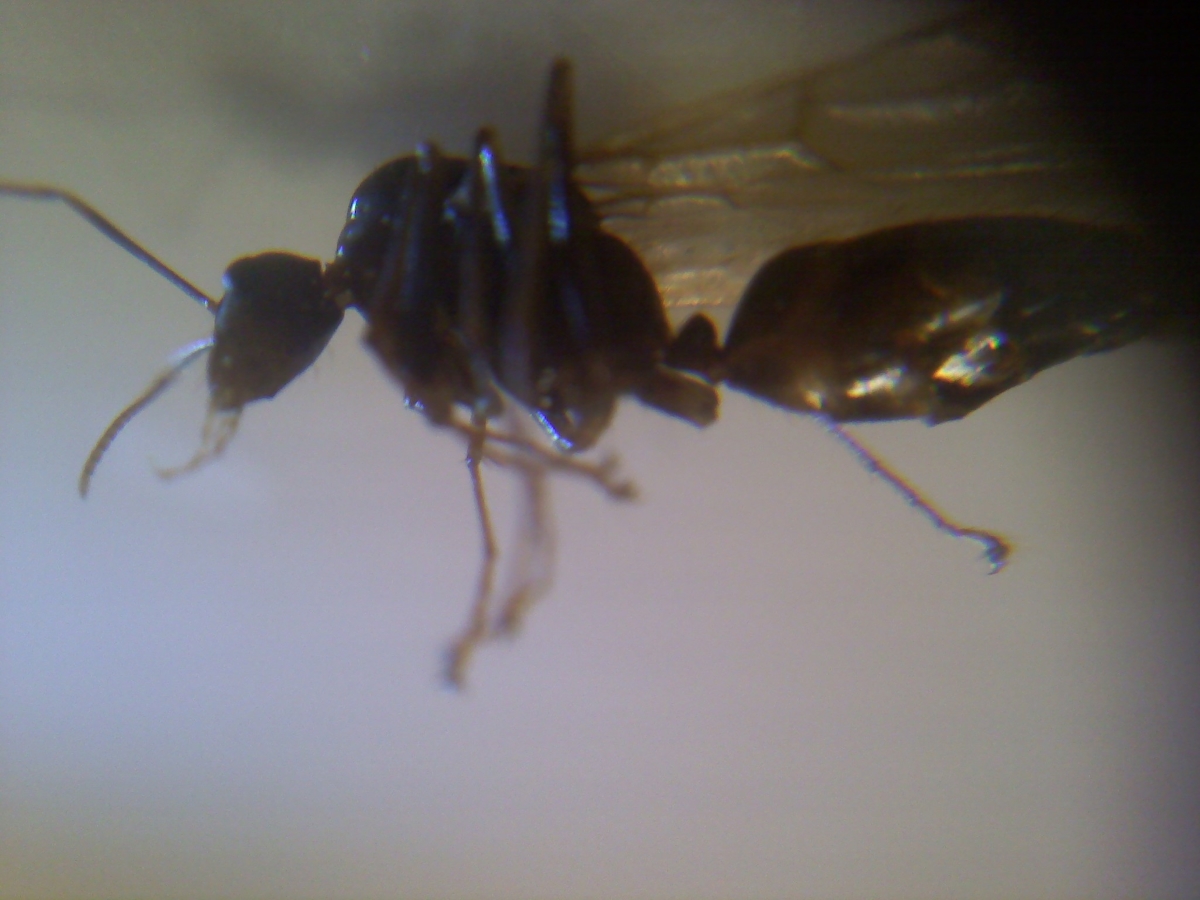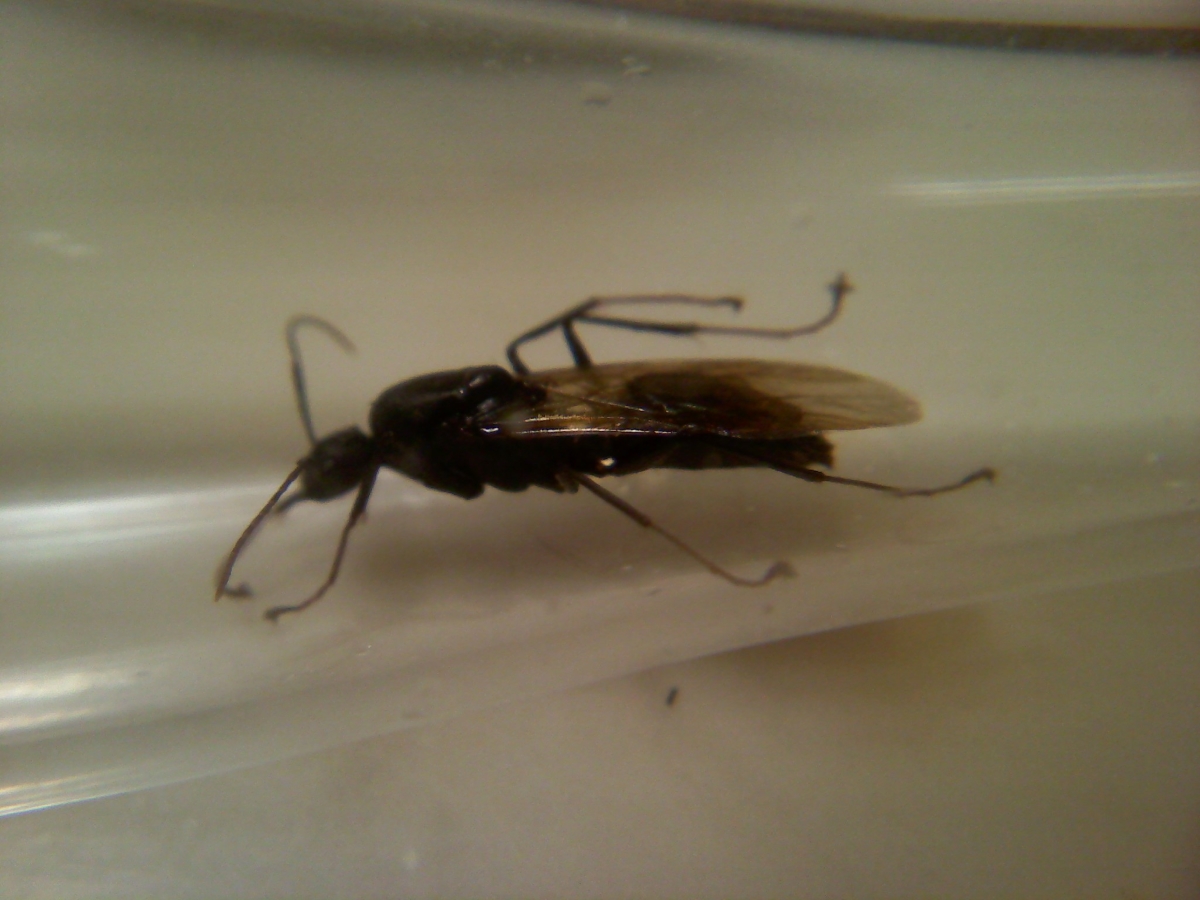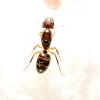1. Caught a little south of St. Louis in a suburban backyard.
2. 4/13/17
3. One was stuck in a bowl of water and the other was dead on my patio.
4. One is 11mm long and the other is 10mm.
5. They're both a black or very dark brown color, a little lighter at the gasters. No hair or other clear features.
I'm not an expert, but I'm pretty sure these are male ants. From what I know, the petiole isn't usually this distinct in wasps and the antennae are also in the L shape. The only two ant species I'm aware of in my backyard are Tetramorium tsushimae and Tapinoma sessile, and these definitely aren't from either of those.


Edited by BMM, April 14 2017 - 4:35 AM.


















